
Samsung Display’s method of measuring the power consumption of OLED displays in IT devices such as laptops was recently adopted as part of international standards. This was achieved three years after Samsung Display first made its proposal at the Standards Meeting of the International Electrotechnical Commission (IEC; an organization that reviews and establishes international standards for electrical technologies such as displays) in May 2019. How long a laptop can function by relying only on the battery, is a key factor in consumers’ purchase decisions. Therefore, it is crucial to accurately measure and indicate how much power a display consumes in a laptop. The new measurement standard of power consumption that was recently adopted, is expected to bring about beneficial changes in ing IT products. Learn more about this method, the journey of having it adopted by the IEC, and the significance of this achievement through the words of Kim Su-young Pro and Lee Seung-min Pro, who have dedicated themselves to the standardization of power consumption measurement for OLED displays.
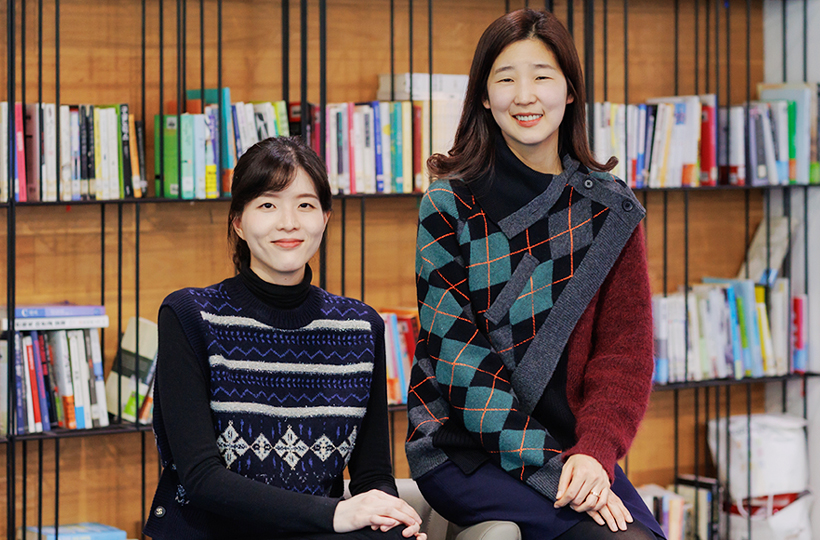
Q. How does the new measurement method for OLED power consumption work?
A. Electronic products rely on electricity as the power source, and so, they consume power when in use. Large products such as TVs are generally connected to a power outlet, but for products that rely on a battery, power consumption is a key indicator that affects the duration of use of the product. Display panels in laptops use power as well, and low power consumption means a longer duration of use. That is the reason why consumers prioritize the power consumption of products like laptops, and manufacturers consider the power consumption critical even down to the level of individual parts.

While the measurement method of the past was based on still screen patterns and modes, the measurement method that was recently adopted as the IEC international standard takes into account actual product use environments, the brightness of the screen varies. A simple way to understand this would be that in the past, the measurement was done based on the white background of Office programs, while the recent measurement method is based on a wide variety of environments that include videos, games, and dark mode.
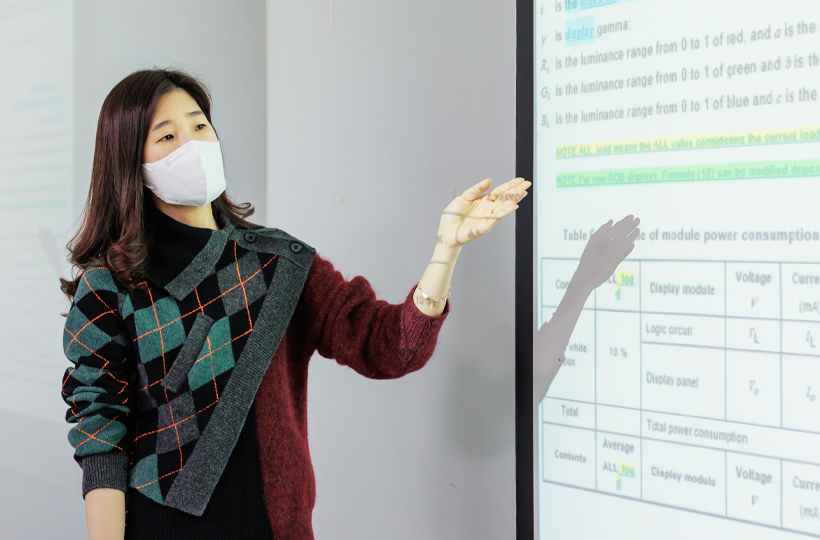
Q. What made you propose this new measurement method?
A. IT products began to fully incorporate OLED displays in 2019. At the time, the standard measurement method was based on a certain level of brightness and pattern comparing the general and power-saving modes. However, this method soon proved to have limitations in providing accurate measurements of the power consumption under various environments an OLED display is being used.
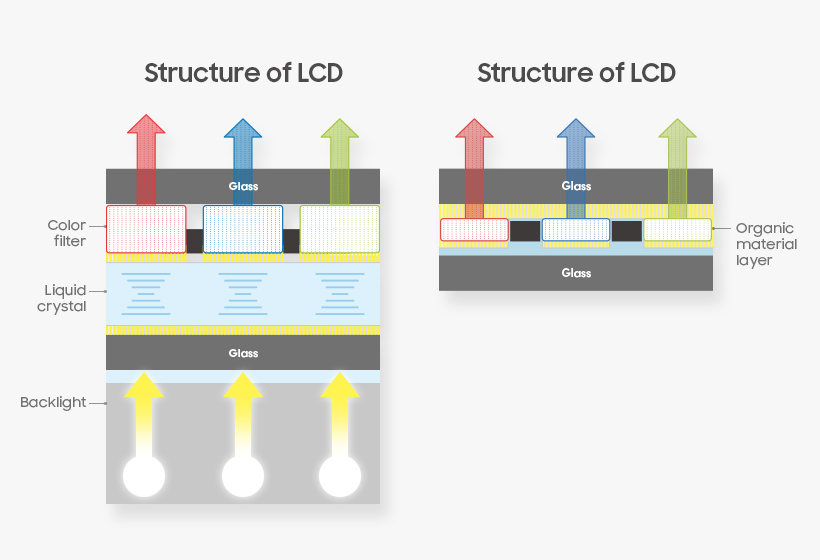
LCDs, which have traditionally been used, operate the display panel by relying on the backlight as the supplementary source to light up the pixels. This backlight needs to stay on, regardless of the brightness of the screen, which results in a consistently high level of power consumption. On the contrary, OLED displays have individual pixels that self-emit light, eliminating the need for a backlight. A bright image will only require relevant pixels to light up, and similarly, in a dark image only relevant pixels get turned off. The pixels that are turned off, theoretically, consume very little power. Therefore, when it comes to moving images or games that require graphics in varying degrees of brightness, OLED displays consume less power than LCDs, which need to have the backlight on at all times. OLED displays keep only the pixels required to express bright colors on. It became clear that OLED displays would be the norm in the industry, thanks to their excellent image quality and great performance, and the traditional method of measuring power consumption could not accurately reflect the characteristics of OLED displays. We felt the need to set a new standard for measuring power consumption, which is why we decided to implement the standardization project.

Q. What does the recent standard adoption mean for the display industry?
A. With the introduction of more products equipped with an OLED display in the IT devices market, consumers have a wider range of options available to them now. The recent adoption of the new standard for measuring power consumption reflects this change in the market and the needs of consumers. The existing measurement method fell short of accurately measuring the characteristics and performance of products that incorporate OLED, which is a new technology. Our rationale was that we need a way to accurately understand and anticipate the actual duration of product use, by reflecting as much of the actual environment the consumers use these products.
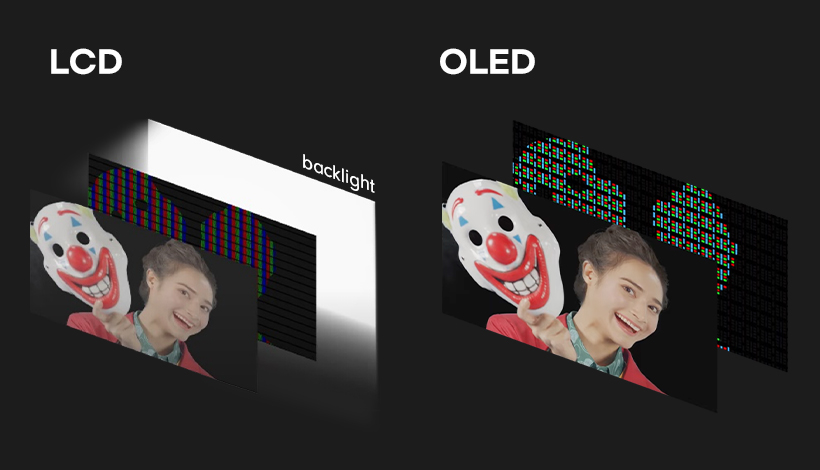
The IEC establishes international standards particularly used for B2B transactions. The organization publishes highly reliable standards because they are established based on discussions and reviews by experts around the world. The establishment of an internationally recognized standard gives manufacturers a guideline that helps them offer more accurate information on the characteristics and specs of their products. And ultimately, the standard will serve as a reliable indicator that consumers can turn to when they make their purchase decisions.
Q. What are the prospects of or plans for the standardization of this measuring method within the industry?
A. The new standard for measuring the power consumption of OLED displays can be commercialized immediately at the industry level. As someone who has been in charge of this project, I am very happy that this standard can allow us to accurately assess the fundamental performance of a product. On top of the measurement standard for power consumption, a report on measuring the durability of foldable devices was also adopted as an IEC standard. Establishing a set of standards usually takes years, and normally, multiple projects for standardization are implemented in parallel. We intend on continuing to identify areas for standardization projects and implementing them.
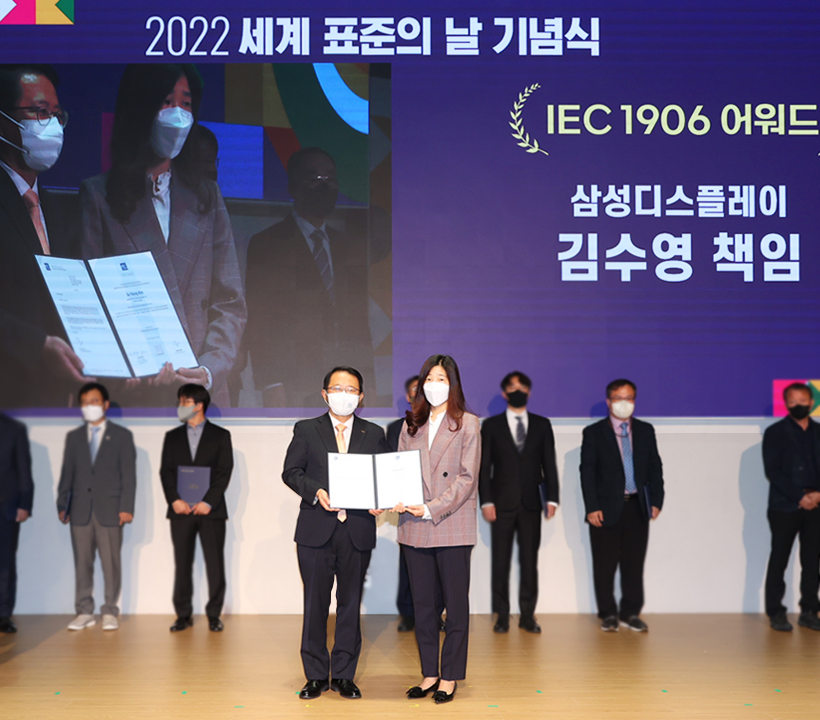
In recognition of his contribution to the establishment of this new international standard, Kim Su-young Pro was given the honor of the “IEC 1906 Award” on October 13 at the ceremonial event for World Standards Day (a day that was designated by the International Organization for Standardization (ISO), IEC, and the International Telecommunication Union (ITU) with the goal of promoting the importance of standards and expanding the use of standards). Samsung Display will continue to play its role as a global display specialist through its efforts towards standardization that reasonably reflects developments in technology.

